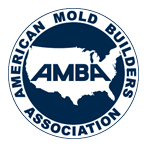By: Paul Ziegenhorn
March 21, 2011
As an ISO 13485 certified manufacturer, managing risk is always a priority. And the most basic concept of that management process is first understanding what those risks are.
Recently, the question was raised: "Can any trace mold corrosion be transferred to the final molded product?" This opened a spirited discussion because, while we've been building injection molds for over thirty years, nobody here had a definitive answer.
After consulting with others in the industry, as well as a metallurgist at our steel supplier, we came to the conclusion that while it's theoretically possible to transfer any contaminant from one surface to another, having a problem with bio-burden testing or introducing a contaminant into a product during plastic injection molding production is highly unlikely.
We are involved in a program that overmolds stainless steel with plastic. A stamped steel piece and a metal injected piece are both loaded into a tool steel mold, then overmolded with a high temperature nylon. The stamped piece is passivated; the MIM piece is as-molded and sintered. In speaking with our metallurgist, we learned that the main sources of corrosion on the mold cavities would be degraded resin coupled with high mold temperatures. Fortunately, as we are the molder on this program, we have control over both of these issues. Our processing and mold temperatures are both within manufacturers' specifications, so that helps control a major source of any corrosion. The metallurgist also explained that any corrosion sufficient enough to create a transfer problem would be visible to the naked eye.
The material we chose for this program was a high hardness, general purpose tool steel. We did this due to the fact that two metal inserts are being inserted into the mold cavity for overmolding. There are other grades with similar hardness and stainless properties available, but based on what we learned we do not feel it is necessary to change steel grades at this time. However, we have decided to add a visual check to our regular preventive maintenance plan for this job, a solution we now feel is sufficient to catch a problem before it occurs.
_horizontal_white_536x129.png)

